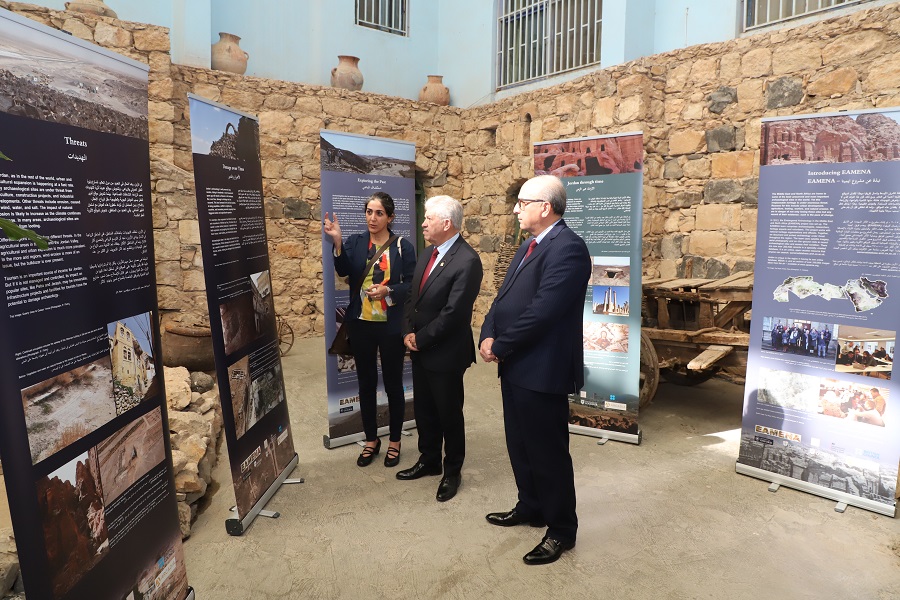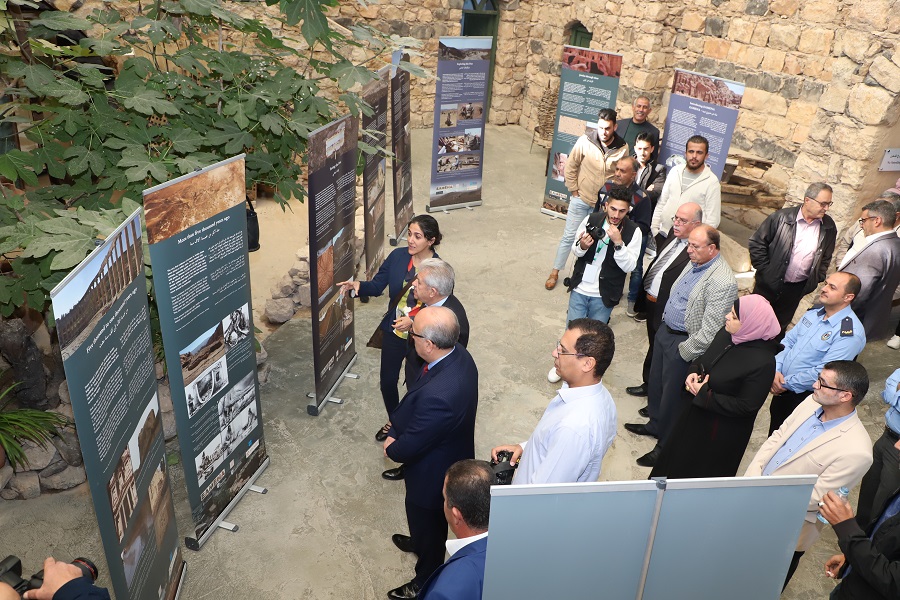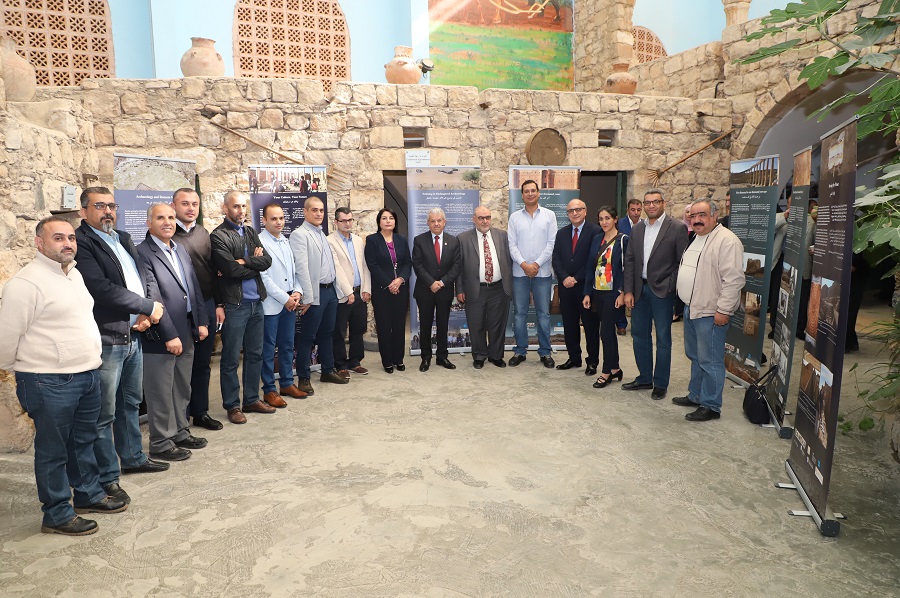
The President of Yarmouk University, Prof. Zeidan Kafafi, inaugurated the exhibition of "Threatened Archeology in the Middle East and North Africa", EAMENA project, which is implemented by the university's Faculty of Archeology and Anthropology in cooperation with the universities of Oxford, Leicester, and Durham in the United Kingdom. During the exhibition’s opening, Prof. Kafafi appreciated the great efforts made by the project’s executives and pointed to the university’s keenness to strengthen the cooperation links with various prestigious international universities. Conducting scientific projects and research of common interest, he stated, contributes to exchanging experiences and harnessing competencies in the service of scientific research, which reflects on the progress of humanity and the development of societies.
He then emphasized that Yarmouk University is the pioneer in the field of preserving the cultural heritage in Jordan and maintaining heritage sites and that it is through the distinguished scientific competencies of the faculty members in the Faculty of Archeology and Anthropology that the university seeks to play its role in serving the local community and discovering the rich cultural heritage that abounds in various regions of the Kingdom. He also mentioned that Yarmouk attempts to work with the competent authorities to educate citizens about the necessity of reviving these places and their participation in preserving them.

The Dean of the Faculty of Archeology and Anthropology, Dr. Hani Hayajneh, presented a briefing on the "Threatened Archeology in the Middle East and North Africa", EAMENA project that started in 2015 as a result of the cooperation between Yarmouk University and the universities of Oxford, Leicester, and British Durham. He then explained that the working group used satellite imagery, aerial photography, and field visits to record the archaeological sites, assess their condition, and document information on a database called "Mega G" that is available on the Internet. Hayajneh also stressed that documenting and recording pictures of heritage sites enables people to understand the past and its link with our lives today.
In return, the training director of the project in Jordan and Palestine, Dr. Azadah Vavadari of Oxford University, reviewed the stages of implementing the project, which aims at increasing people's awareness of the value of archeology and cultural heritage. She then noted that a number of specialists in the field of archeology have been trained in a number of countries in the Middle East and North Africa, of whom 21 were Jordanians, on how to use new technologies in the management and protection of heritage and on how to interpret satellite images with the aim of preparing records for archaeological sites. She explained that the project is being implemented with funding from the Arcadia Fund and the British Council's Cultural Heritage Protection Fund, in partnership with the Department of Digital Affairs, Culture, Information, and Sports.
Noteworthy that the exhibition was attended by the Vice President of the University for Humanitarian Affairs Prof. Fawaz Abdel Haq, the Dean of Student Affairs Dr. Amal Naseer, the Director of the project training in Egypt Dr. Mohamed Kenawi from the University of Oxford, , a number of faculty members at the faculty, and a crowd of students.


